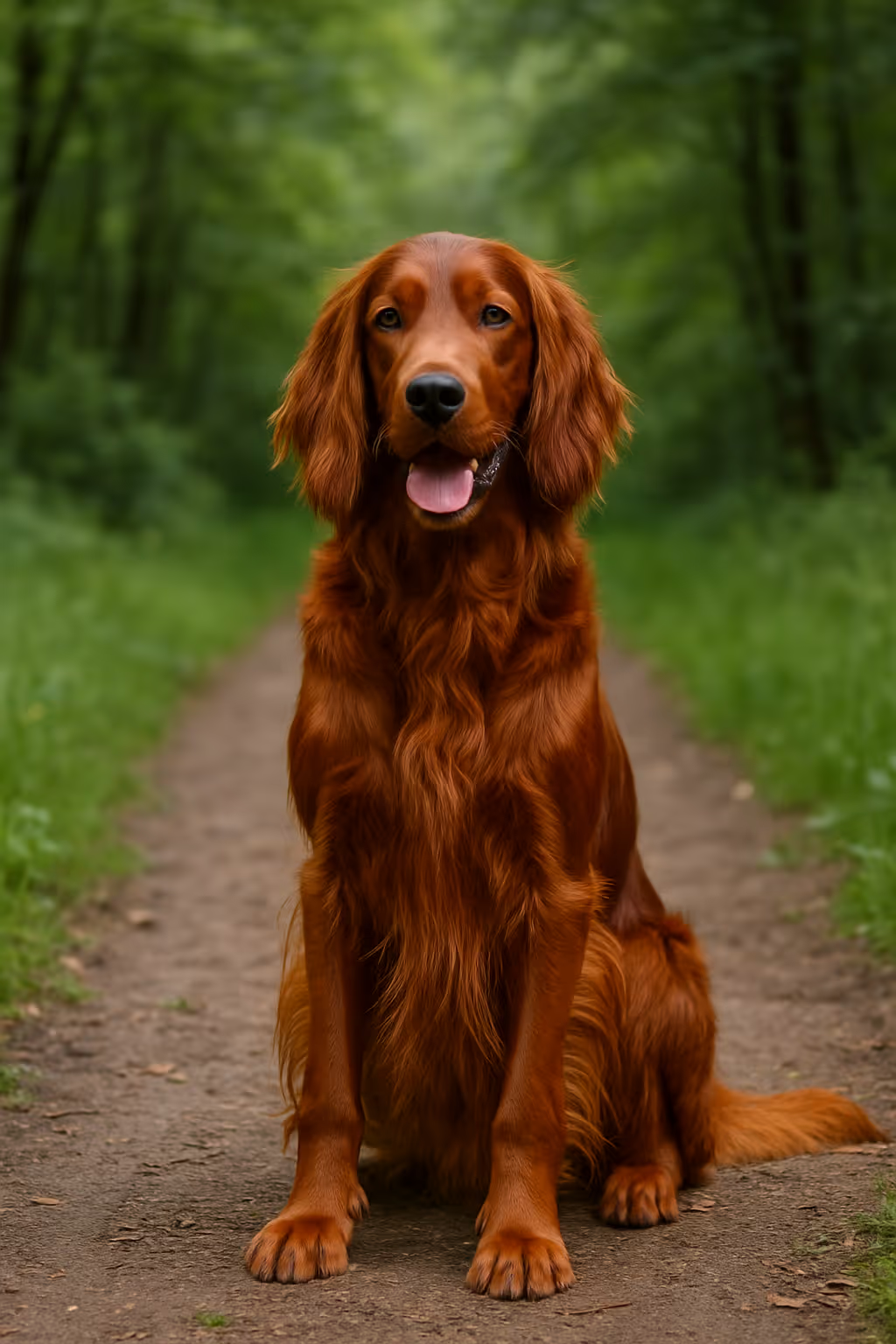The Irish Setter is a stunning and spirited breed known for its silky red coat and joyful demeanor. Bred for hunting, this sporting dog thrives in active households where it can run, play, and bond with its humans. Irish Setters are intelligent, affectionate, and famously good with children, making them ideal for families who enjoy the outdoors. However, their high energy and sensitivity require patient training and daily exercise.

The Irish Setter originated in 18th-century Ireland as a gundog used to “set” game birds. These early red-and-white setters eventually evolved into the solid mahogany-coated Irish Setter we recognize today. They gained popularity among hunters for their speed, stamina, and keen scenting ability. In the 19th century, the breed was refined further and became a show-ring favorite. Today, Irish Setters continue to shine both as companions and working dogs.
Irish Setters are large, athletic dogs with long, lean bodies and a distinctive feathered red coat. They have expressive almond-shaped eyes, a deep chest, and a smooth, graceful gait. Males typically weigh between 65–75 lbs, while females range from 55–65 lbs. Their long ears and elegant build give them a regal yet playful appearance.
Irish Setters require moderate grooming. Their feathered coats should be brushed at least 2–3 times per week using a slicker brush or metal comb to prevent tangles. A trim around the feet and ears every few weeks keeps them neat. Bathing is needed every 6–8 weeks or after muddy outdoor play. Regular ear cleaning is essential due to their floppy ears.
Irish Setters are extremely active and need at least 1–2 hours of exercise daily. Long walks, hikes, and off-leash play in safe areas are ideal. They excel in activities like agility, field trials, and scent work. Without enough exercise, Irish Setters can become bored and develop destructive habits.
Irish Setters are intelligent but have a mischievous and sensitive streak. Positive reinforcement with treats and praise works best. Start socialization and obedience training early. They can become easily distracted, so short, engaging training sessions are most effective. Crate training and leash manners should be introduced early on.
A high-quality diet formulated for large, active breeds is ideal. Look for food with lean proteins (chicken, lamb, or fish), omega-3s for coat health, and joint support. Most adults eat 2.5–3.5 cups of food split between two meals. Avoid overfeeding, as the breed can be prone to bloat.
Common health issues in Irish Setters include:
Ensure breeders perform health screenings and watch for signs of gastric discomfort after meals. Slow-feed bowls and elevated feeders may help reduce bloat risk.
Reputable breeders will provide health clearances for hips, eyes, and heart. Look for CKC-registered breeders or rescues like Save Our Setters or Irish Setter Club of Canada Rescue. Always ask about the puppy’s temperament, socialization, and parental health testing.
Are Irish Setters good with kids?
Yes, they’re affectionate and playful, but their energy may be overwhelming for toddlers. Supervised play is best.
Do Irish Setters shed a lot?
Moderately — they shed year-round, especially in spring and fall. Regular brushing helps manage it.
Are Irish Setters easy to train?
They are smart but can be easily distracted. Consistent positive training is key.
Is the Irish Setter hypoallergenic?
No, they are not hypoallergenic and may trigger allergies in sensitive individuals.
How much daily exercise does an Irish Setter need?
At least 1–2 hours of activity per day, including both mental and physical stimulation.